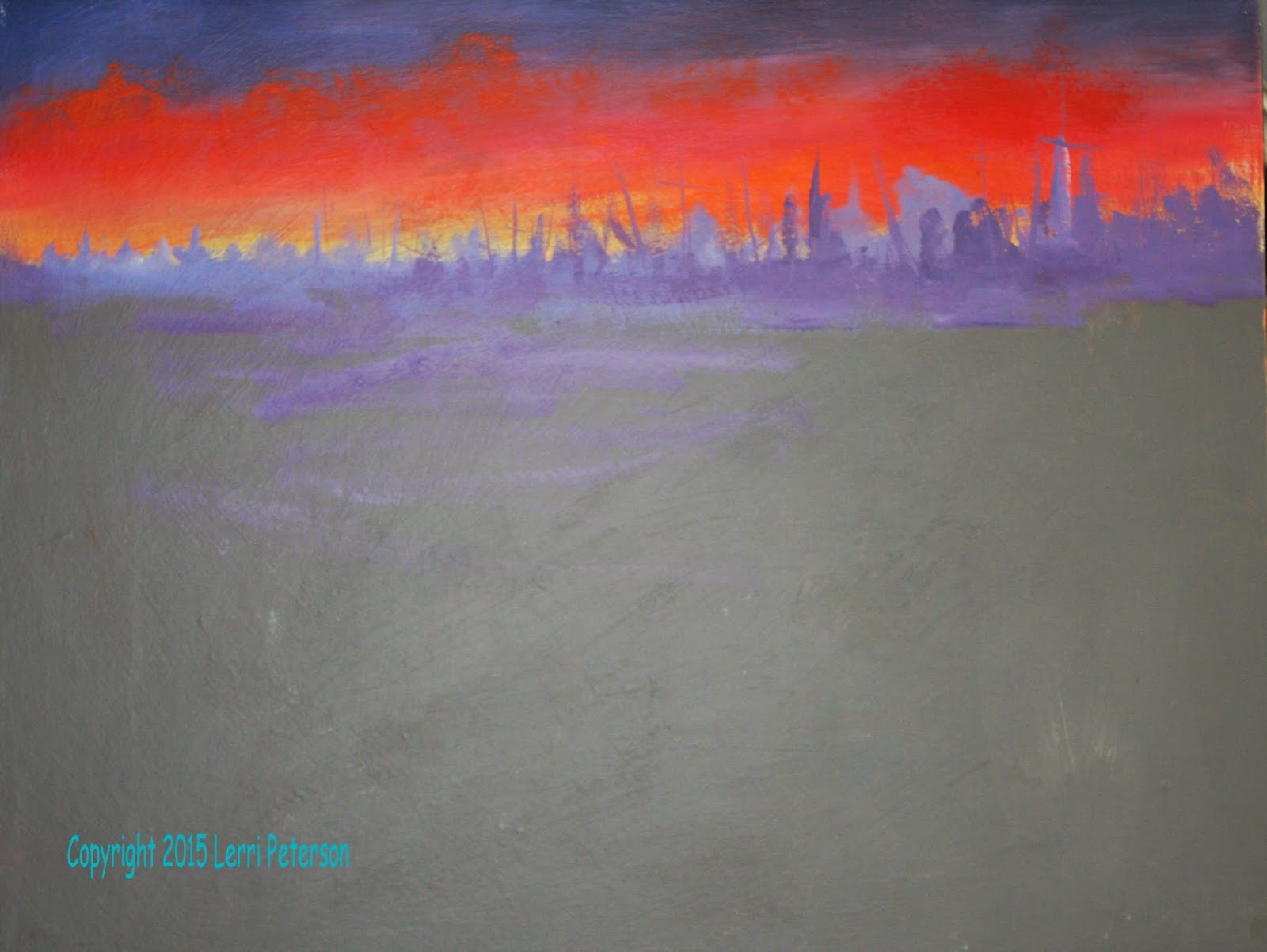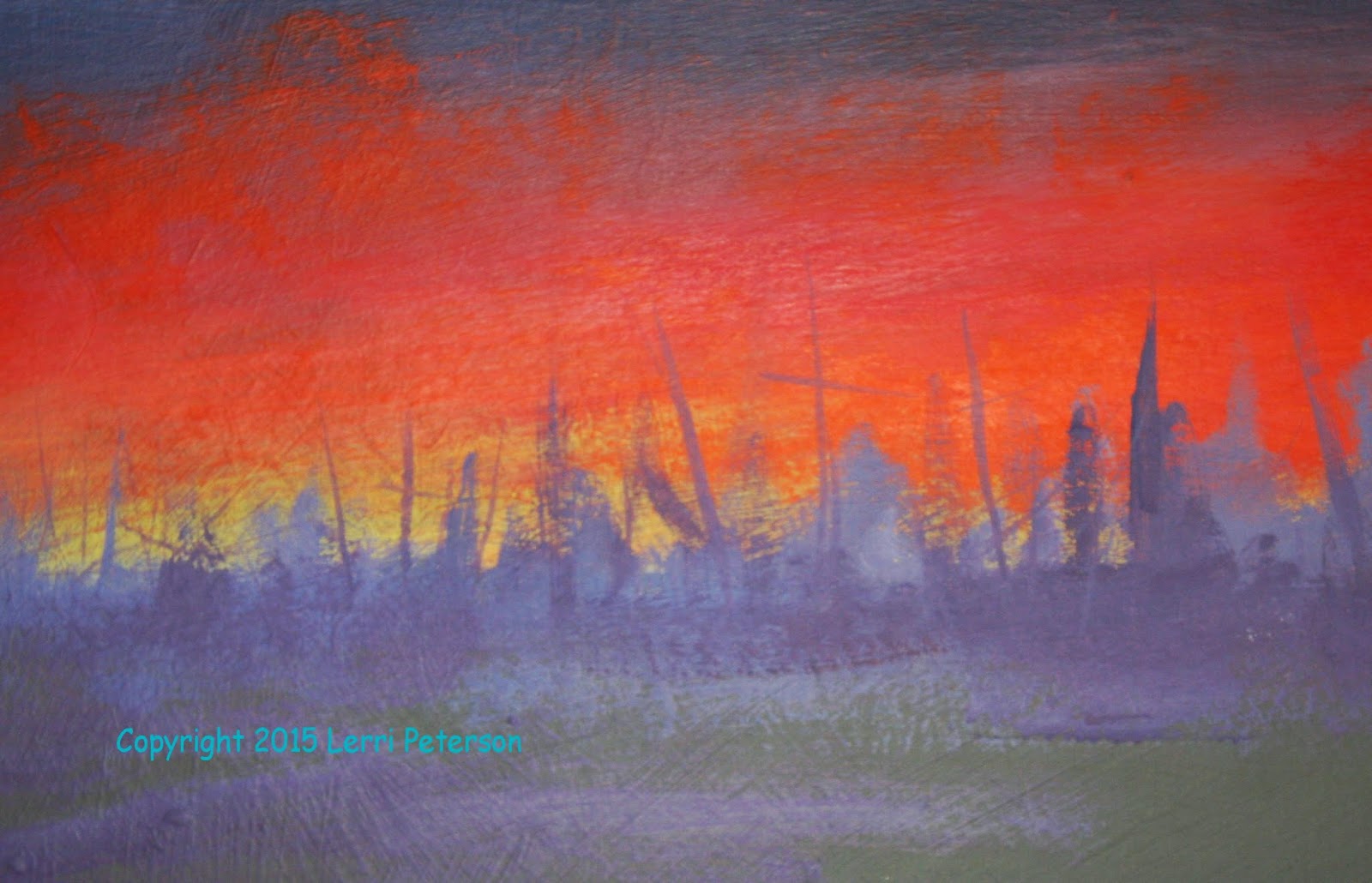Acrylics: Safe Harbor Week1
I am using a toned
canvas for this project. This was a canvas that I had previously had something
else on and I didn't want it anymore so I took some gesso a little bit of
ultramarine blue and some burnt umber and painted it out to get rid of what was
on there before. Your canvas doesn't need to be toned, however, if you want it
to be toned that's fine and just use neutral color or a warm color like a raw
sienna then let it dry. This is totally a preference of the artist and you do
not need to tone your canvas for this project.
Using my #10 flat
bristle brush I applied gesso the upper third of my canvas above the horizon
line, this will help me blend my colors so while it was still wet I picked up
some yellow and painted it along the horizon line blending it lightly in with
the gesso. Next I picked up a little bit of orange and painted the orange at
the top of the yellow blending it slightly with the yellow. Next, I picked up
some red and at the top of the orange added the red and blended it slightly
with the orange. What this will do is give us a buffer between the yellow at
the horizon and the blue at the top so we don't mix green.
Now I clean my brush, up
to this point I have not cleaned my brush, I only wiped it out but because I
want to have a nice clean color I needed to rinse my brush well. On my now
clean brush I picked up my Ultramarine blue, a tiny touch of purple and a
little touch of burnt Sienna and I painted across the top of the canvas lightly
blending into the gesso. When I got down to the red area I lightly blend the
two areas together then I rinsed my brush well again, and then I started to
blend the areas together to create a nice gradual transition from the yellow at
the horizon to the dark blue of the sky, wipe and/or rinse your brush often
especially if you have been in the dark blue before you go into the lighter
yellow area. If you want, you can take your blending brush - the one with the
soft hairs - and lightly go over the sky area to blend the colors, the key to
this brush is a very light touch. If you want to, you can also put some clouds
in the sky (you may need to do this if your sky is dry and the bands of color
to distinct) or some mist, this is totally up to you.
While the sky was still
a little wet I mixed a blue gray color that color is made with ultramarine
blue,
a touch of burnt sienna, a little bit of purple and white or gesso. You want
color that its value is just slightly darker than the sky and it should be on
the blue side, then using your flat bristle brush or a flat sable brush you
just want to make shapes right along the horizon line. They don't have to be
distinct shapes just stuff. They can suggest trees or buildings or a harbor in
the background and what I did on mine was at the left side of my canvas I made
the shapes smaller and less distinct and as I came across my canvas I made the
shapes a little larger a bit more distinct such as the suggestions of masts or
buildings, that way it gives some suggestion of distance to my background as
things go into the background they become smaller softer and color and less
distinct.
That is where we ended
our lesson for Monday I hope everyone can get their own paintings to this
level. Keep painting and I will see you in class.


